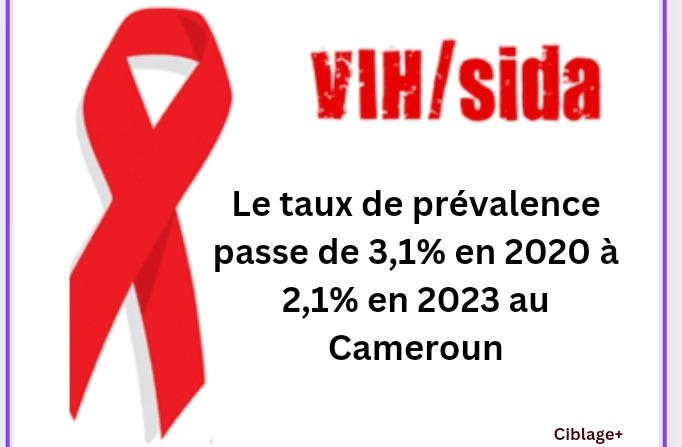According to information made public by the Minister of Public Health of Cameroon, le HIV/AIDS prevalence rate is 2.1% in 2023 in Cameroon. This rate increased from 3.1% in 2020 to 2.1% in 2023.
Reminder of statistics from previous years
According to the 2018 demographic health survey (EDS), the HIV prevalence rate among the population aged 15-64 has increased from 5.4% in 2004, to 4.3% in 2011 and 2.7% in 2018, a drop of 50% over 14 years. In 2020, according to the National Committee for the Fight against HIV/AIDS, Cameroon recorded 37,435 new HIV/AIDS infections in the first quarter of the year. This brought the prevalence rate of the disease to 3.1% compared to 2.7 in 2018. The number of people living with HIV (PLHIV) in Cameroon was estimated at 480,232 and the number of new HIV cases at 9,905 in 2022 in Cameroon.
The country’s prevalence curve follows a downward trend
It was yesterday, Wednesday April 24, 2024, that the figures were revealed by the Minister of Public Health of Cameroon, president of the National Committee to Fight AIDS. Via the Facebook page of the Ministry of Public Health, the communication unit of the said ministry writes:
“The Minister of Public Health, Dr. MANAOUDA Malachie, President of the National Committee for the Fight against AIDS, after the usual pleasantries, gave the floor to Dr. KETCHADJI of the DLMEP to present the “Pediatric Surge” project, which is a multi-strategic approach, aimed at accelerating all progress in favor of prevention of AIDS in children and adolescents and their care. It should be noted from his presentation that the indicators remain weak and that we must innovate to hope to eliminate pediatric HIV in Cameroon by 2030. Because in adults the curve is promising. We went from a prevalence rate of 2.7 in 2018 to a rate of 2.1 in 2O23. »
What is the prevalence rate of a disease?
The prevalence rate of a disease is a measure that allows us to know the proportion of people in a given population who have this disease at a specific time. This is a way to understand how widespread the disease is in the community.
Prevalence is calculated by dividing the number of people with a given disease in a population at a specific time by the total number of people in that population. The result is then multiplied by 100 to obtain a percentage. For example, if a study shows that there are 2000 people with HIV/AIDS out of a total population of 100,000 people, the prevalence of HIV/AIDS will be 2%.
The drop in the prevalence rate does not mean the weakening of the virus
The disease continues to infect many citizens. Above all, we must not let our guard down. The World Health Organization says there is currently no cure for HIV infection. It is treated with antiretroviral drugs, which stop the virus from replicating in the body. Currently, ART does not cure HIV infection, but allows the infected person’s immune system to strengthen, allowing them to fight other infections.
But, in our communities, we can reduce the risk of HIV infection with the following prevention steps:
Use of the male or female condom during sexual intercourse; Testing for HIV and other sexually transmitted infections; Voluntary medical male circumcision; Reduction of drug use by injection.
According to the WHO, doctors can also suggest medications and medical devices to help prevent HIV, including:
Antiretrovirals, including oral pre-exposure prophylaxis and long-acting products; Dapivirine vaginal rings; Long-acting injectable cabotegravir.
As you will have understood, the country’s prevalence curve is following a downward trend, but we must continue to respect barrier measures to eradicate the circulation of HIV/AIDS in our different communities.
